

Orchids
Photos taken in the Butterfly House on Mainau Island
May 2007
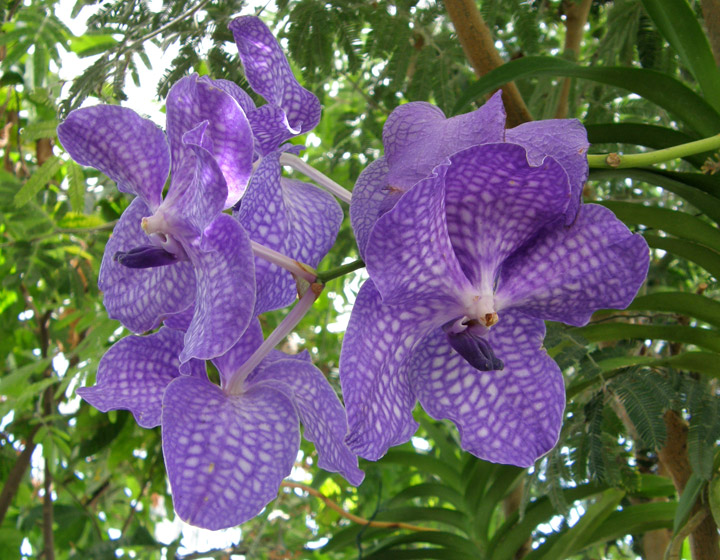
Botanical orchid is a loose term to denote mainly small flowered tropical orchids belonging to several genera (not necessarily related to each other) that don't fit into the "Florist" orchid category. A few of these genera contain enormous numbers of species. Some, such as Pleurothallis and Bulbophyllum, contain approximately 1700 and 2000 species, respectively, and are often extremely vegetatively diverse. The primary use of the term is among orchid hobbyists wishing to describe unusual species they grow, though it is also used to distinguish naturally occurring orchid species from horticulturally created hybrids.
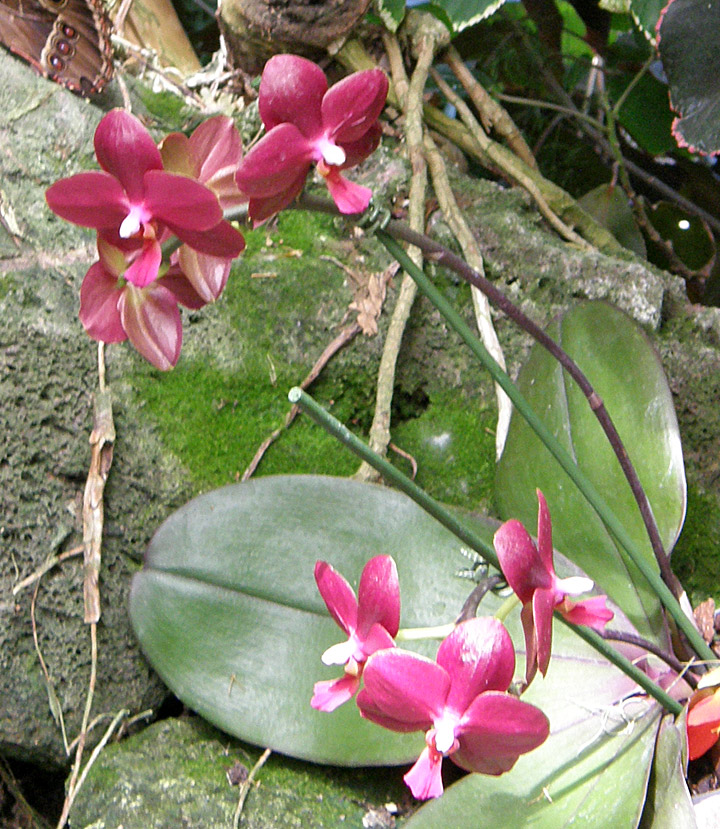
The Orchids (Orchidaceae) are among the most diverse plant families. They get their name from the Greek Orchis, testicles, from the appearance of the pseudobulbs in some terrestrial species. Roughly 30,000 species have been described, and at least 60,000 more hybrids have been bred by horticulturalists. They are monocotlydons, with flowers composed of 6 petals, one of which is modified into a "lip". Ranging in size from tiny Caribbean Epidendrons (3 inches) to massive Gramatophyllums (20 feet+) in New Guinea, their beauty and sophistication have captivated man.
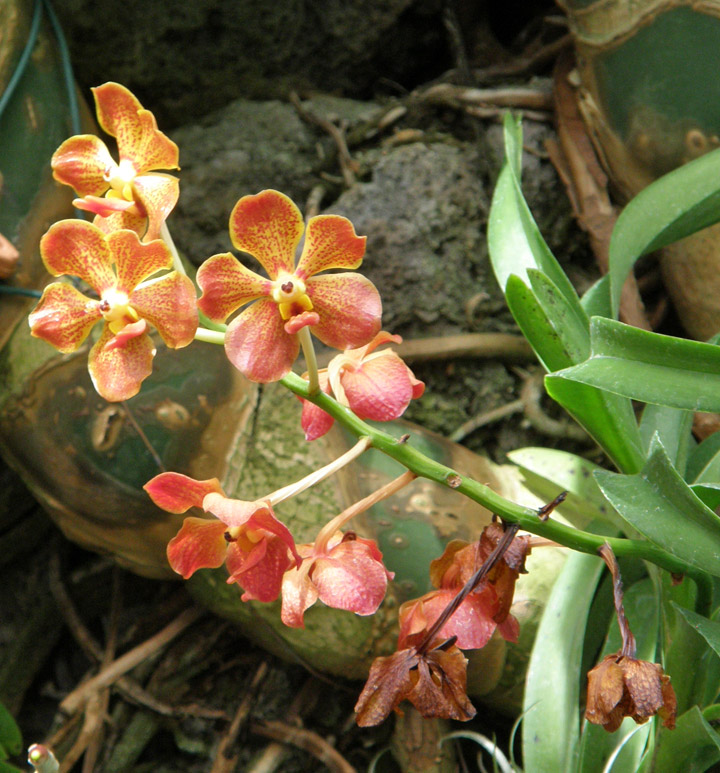
Most orchids are epiphytic, residing on tree limbs without parasitizing
resources (as Mistletoes do). Others live on the ground, in shaded places often.
Almost all the species rely heavily upon mycorhizal associations with various
fungi that decompose surounding matter, freeing up water-soluble nutrients. Most
orchid seeds are extremely tiny, with no food reserves, and will not even
germinate without such symbiosis to supply nutrients in the wild. Techniques
have now been devised for germinating seeds on a nutrient-containing gel,
eliminating the necessity of the fungus, and greatly aiding the propagation of
rare and endangered species.
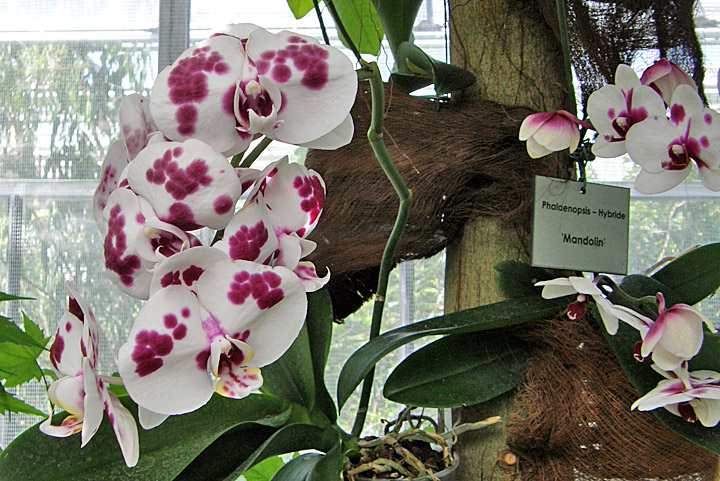
It is in their reproductive methods that Orchids truly shine. The Paphiopedilums
(Lady Slippers) have a deep pocket that traps visitors, with just one egress
that leads to pollination. A Eurasian genus has flowers that look so much like
female bumble bees that males flying nearby are irresistably drawn in. An
underground orchid in Australia never sees the light of day, but manages to dupe
ants into pollinating it. The Masdevalia stinks like a rotting Carcas, and the
forest flies it attracts assist its reproduction. A species Darwin discussed
briefly actually launches its pollen sacks with incendiary force when prompted.
Some Phalaenopsis species in Malaysia use subtle weather cues to coordinate mass
flowering.
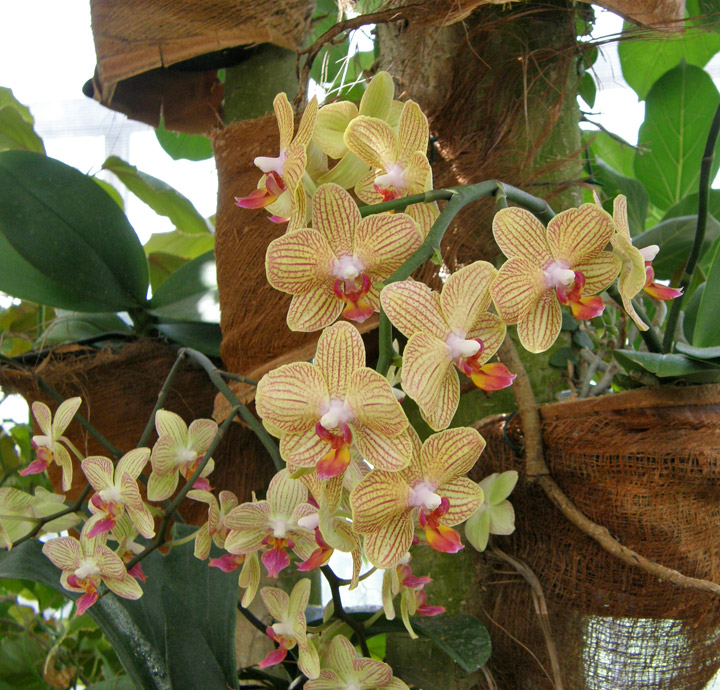
There are a great number of tropical and subtropical orchids, and these are the
most commonly known, as they are available at nurseries and through orchid clubs
across the world. There are also quite a few orchids which grow in colder
climates, although these are less often seen on the market.
Text from Wikipedia
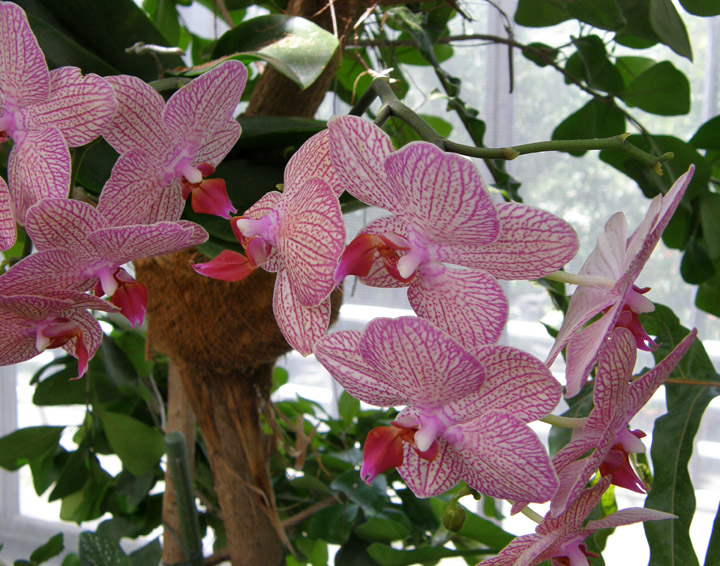
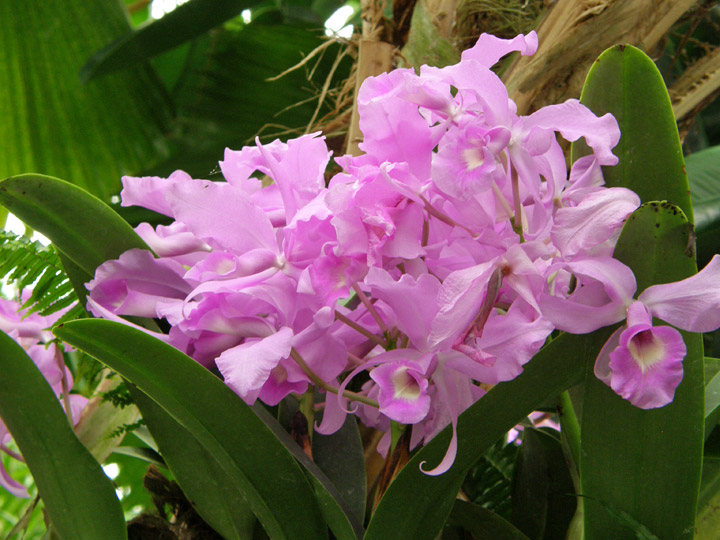
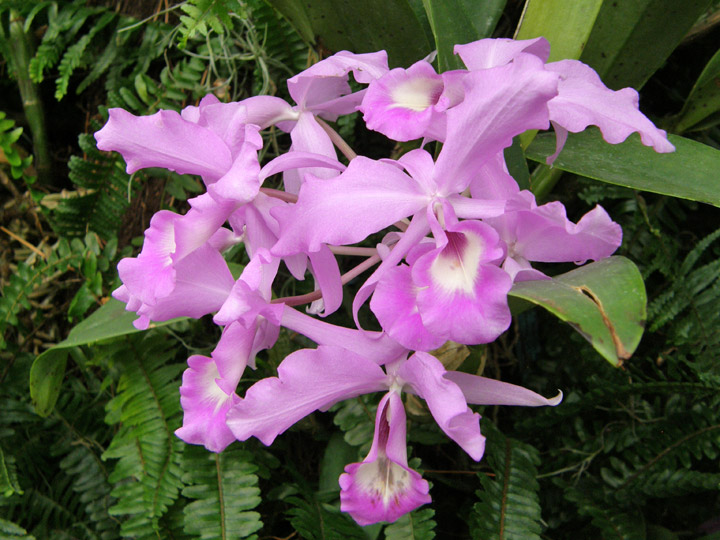
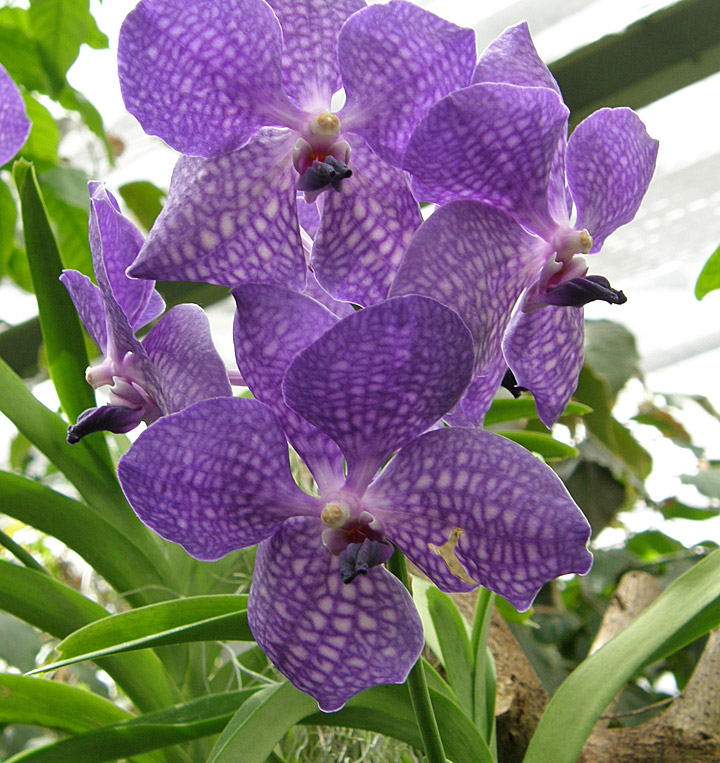
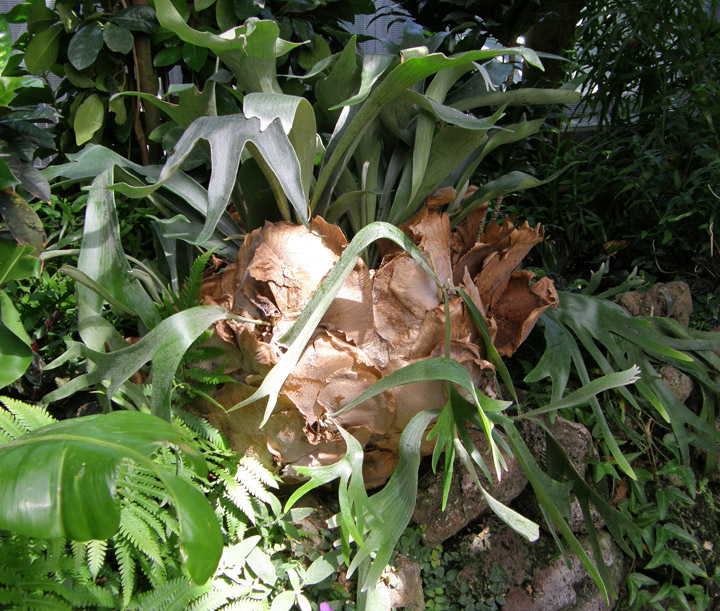
stag horn fern